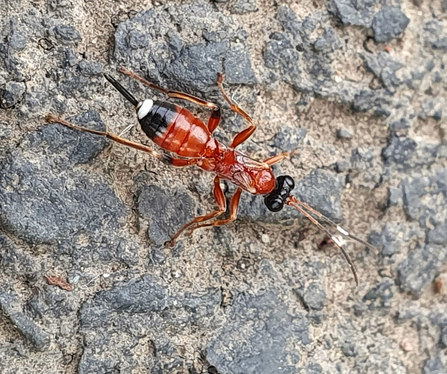Cathryn Dhonau submitted a photo of an ichneumon wasp via the Trust's wildlife sightings scheme at the end of June. Ichneumon wasps are often very difficult to identify but Cathryn had struck lucky and had stumbled upon one that was identifiable from the single photograph that she took on her camera phone. National Ichneumonidae expert, Jaswinder Boparai, confirmed the wasp as Agrothereutes abbreviatus.
The wasp is one of more than 5000 species of parasitoid wasps in the UK. Depending on the species, parasitoid wasps lay their eggs on or into their hosts – the host provides all the food that the hatched larvae needs to develop into an adult. It may sound gruesome but it’s a fascinating lifestyle that contributes to nature’s balance.
Many of these wasps don’t have a common name as they’re not often seen and very little is known about them. The national database shows that there are just 10 other records in the UK for Agrothereutes abbreviatus. Eight of these are from before 1920 and of the three more modern records, this is the first time it’s been recorded in Worcestershire.
Cathryn, who was taking her dog for a walk in St Peters, Worcester, when she spotted the wasp, said "I noticed a little red bug on the pavement. Thinking little of it initially, I just carried on walking but a niggling curiosity got the better of me and I carefully retraced my steps for a closer look.

